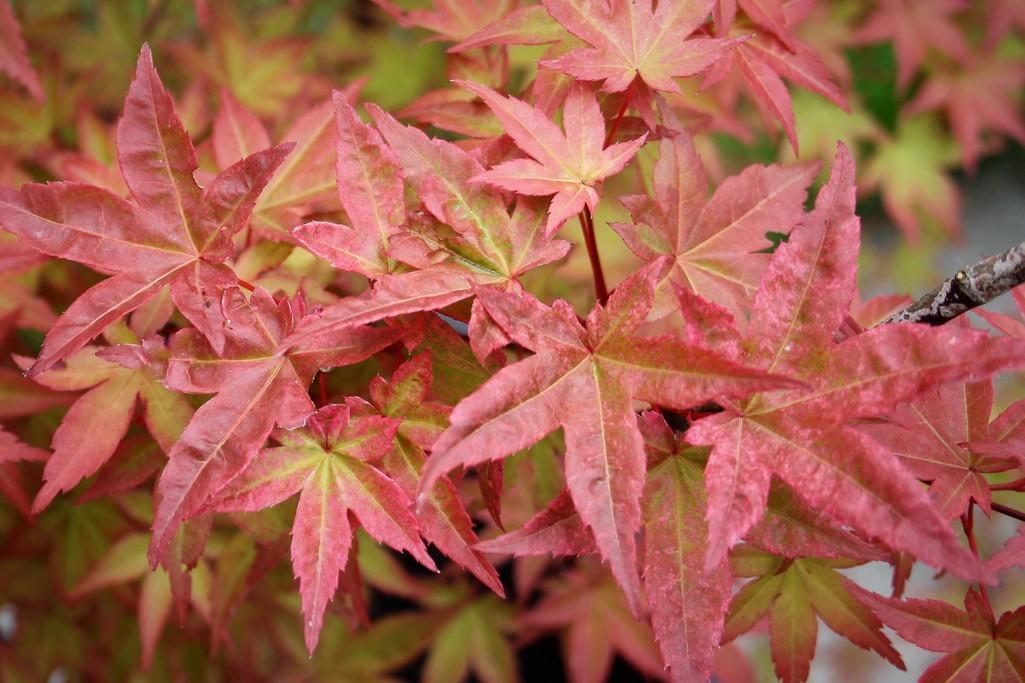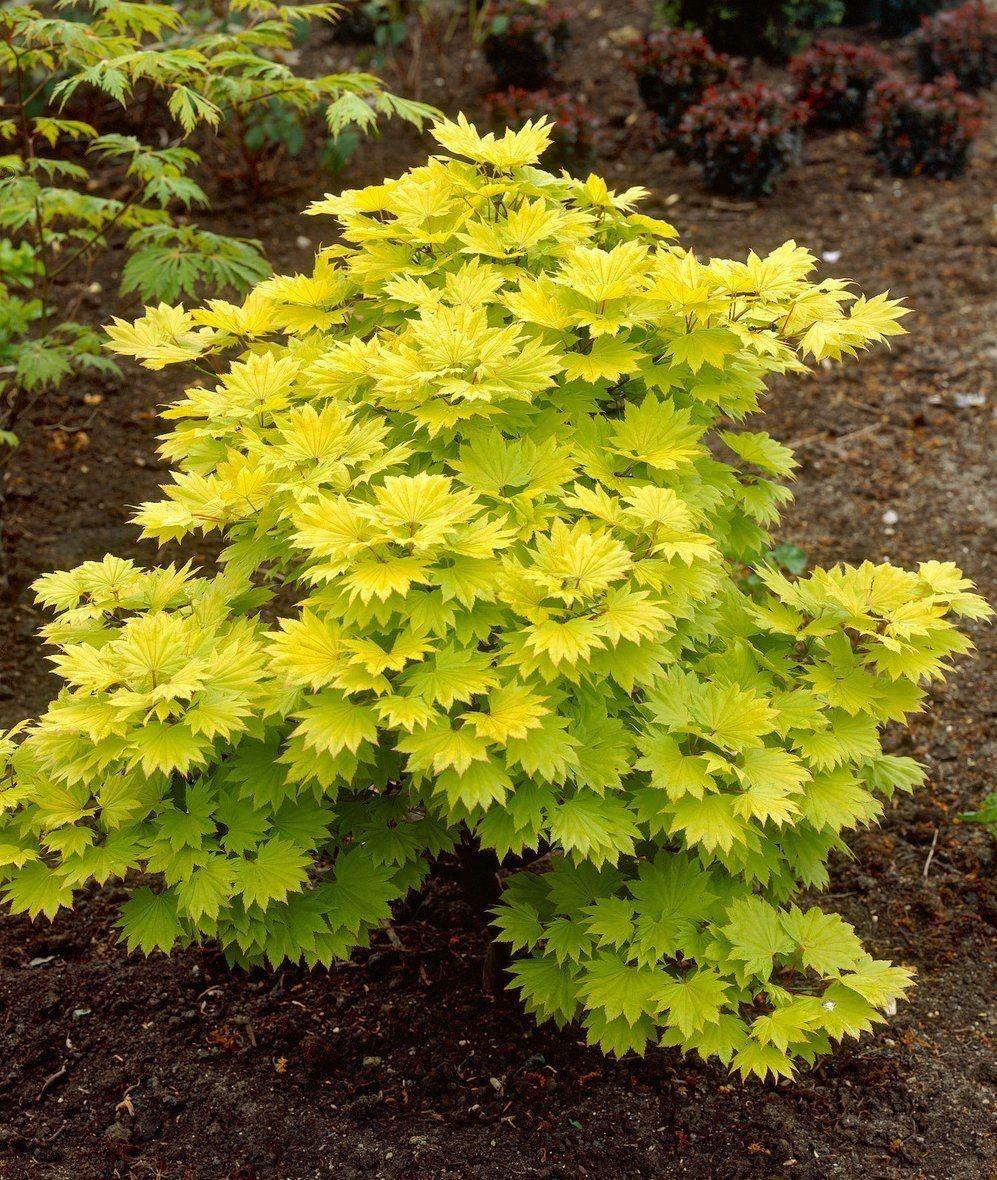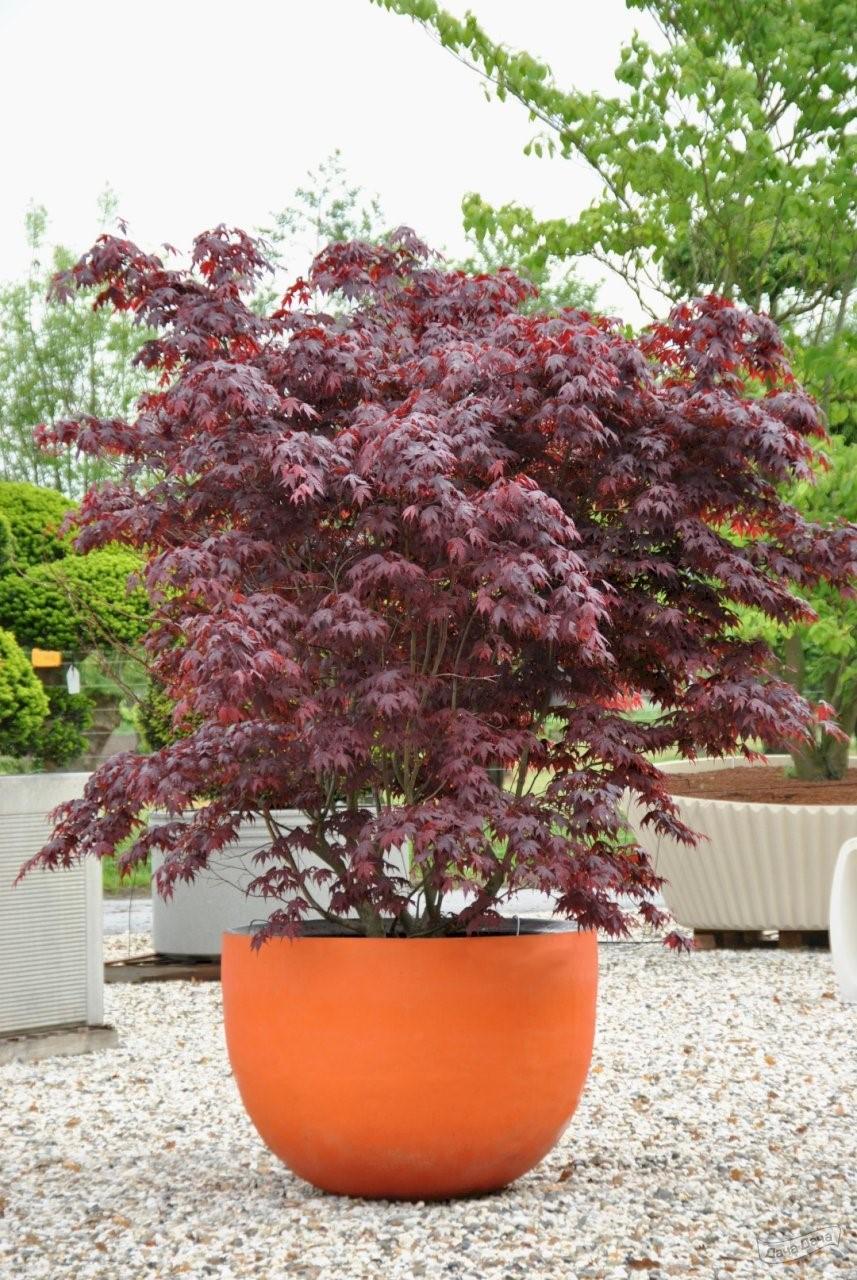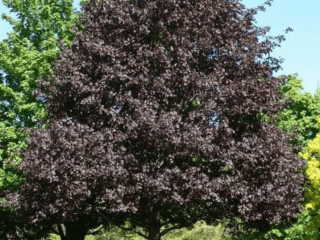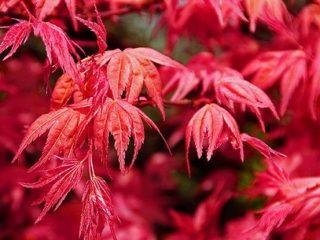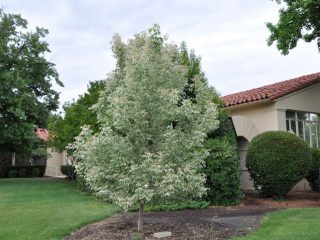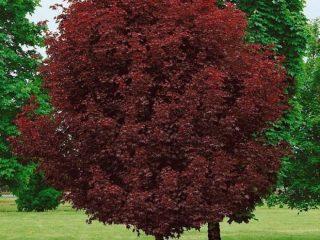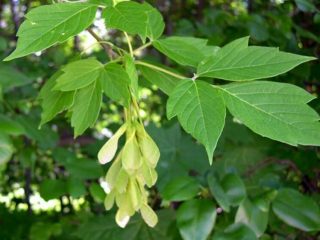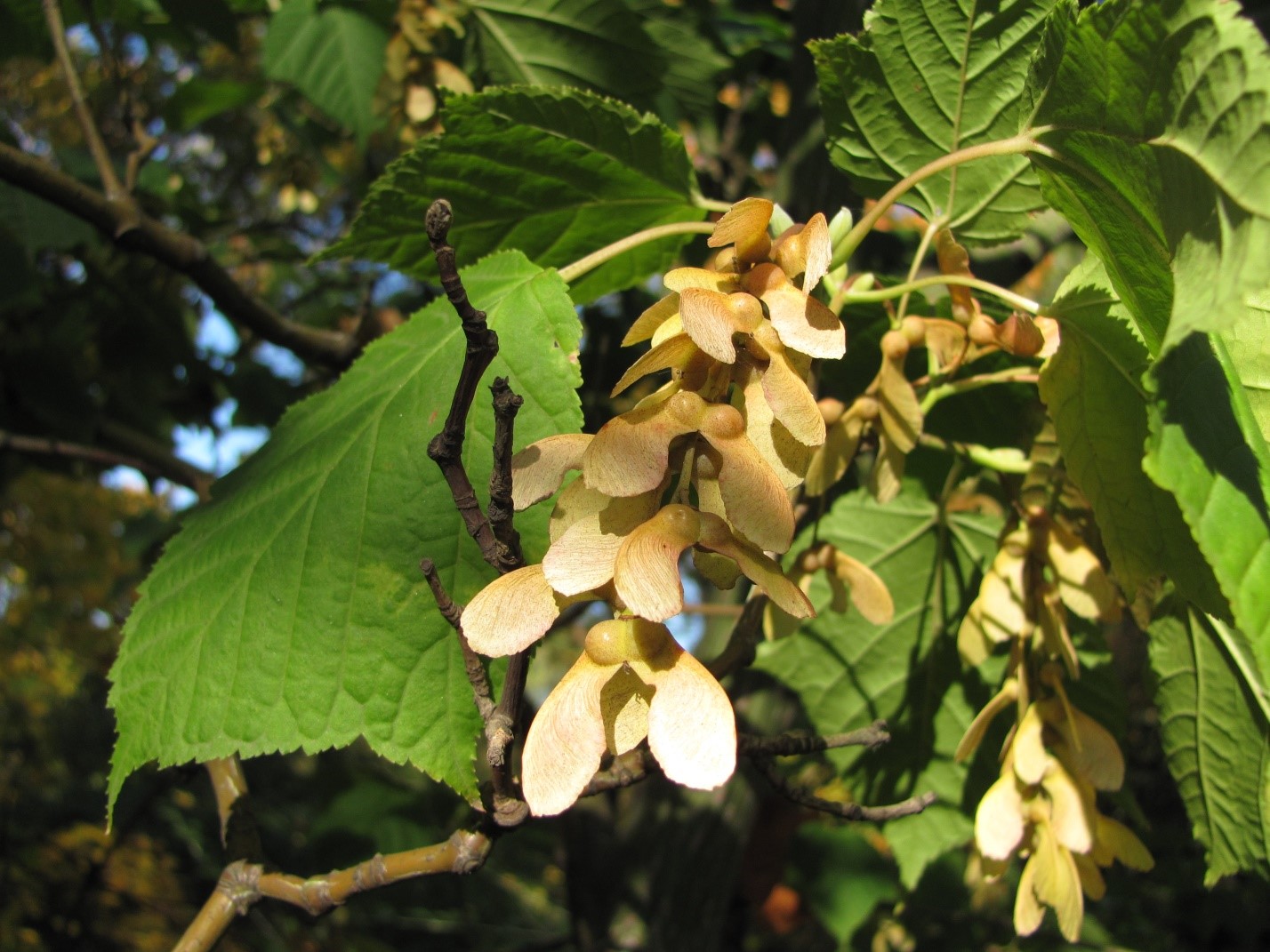Content
The phrase red maple conjures up autumn and fallen maple leaves, turning purple from lack of sun. In fact, it exists as a separate species - it is also called Japanese. True, the maple tree is not always brightly colored: in the spring, green leaves are formed, which over time acquire an orange and then a red tint.
Description of red maple
Red maple is not one tree, but a group that includes several varieties. The plant is native to Japan and southern Korea.

From the outside, the crop does not differ from an ordinary deciduous tree
The branches have a red-gray tint and a glossy surface, which is why they are pleasant to the touch. A distinctive feature of the plant is its leaves - round, with toothed edges. They are opposite each other, covered with fluff on the underside.
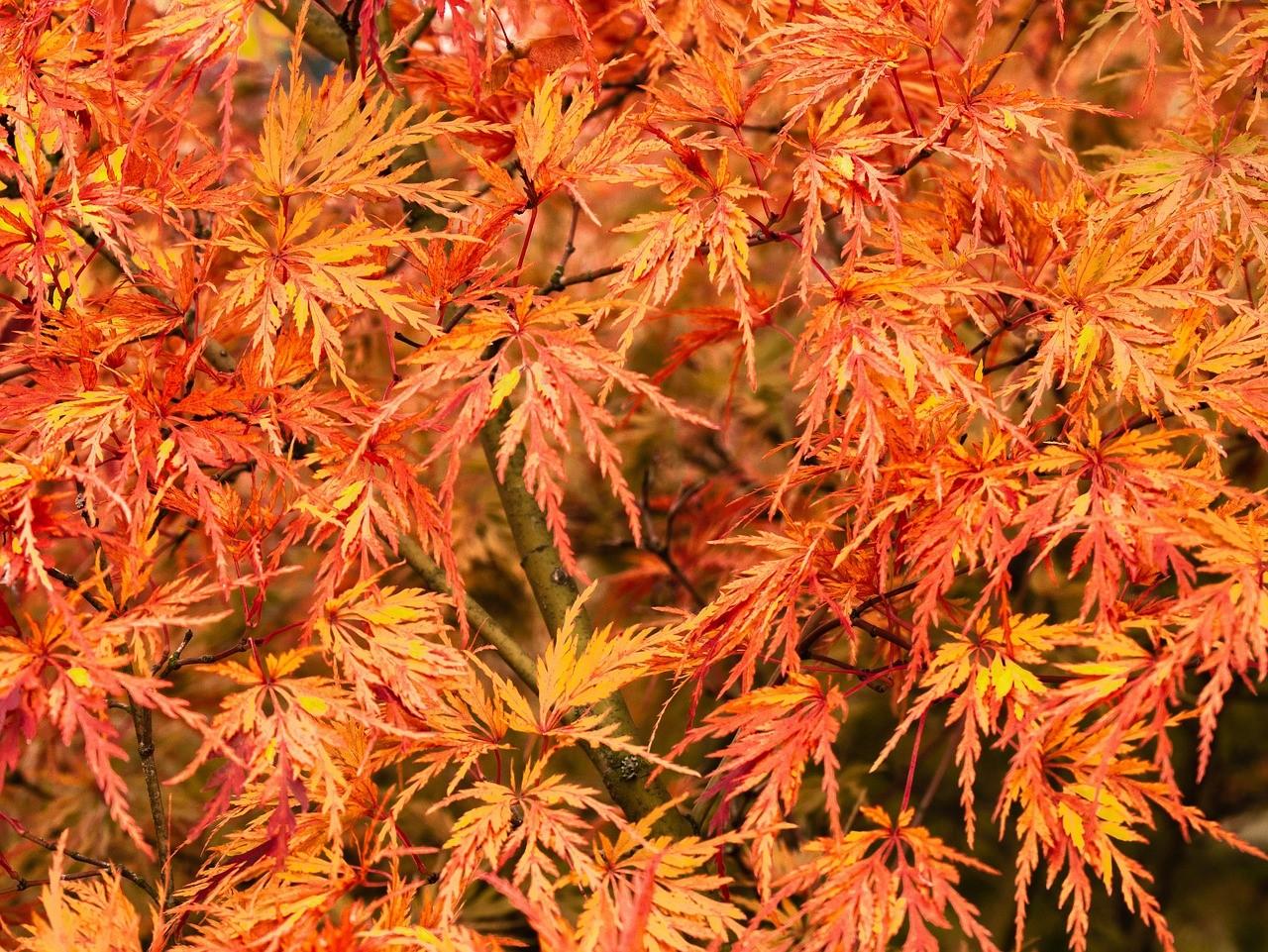
The diameter of the plate is 10-15 cm; a deep cut can be seen in the middle part
Red maple crown height and diameter
Like many Asian crops, the red maple is a short tree.Some specimens barely exceed 2 m, but there are also large ones - up to 12 m. The crown diameter of both is 3-4 m.
Red maple blossom
In the wild, the plant is always short. But height is not its main feature. Red maple is grown in gardens and parks because of its beautiful flowering. The buds reach up to 3 cm, appear in April and stay on the tree until early summer. The flowers are characterized by a burgundy or purple color, some varieties have a yellow-green tint.
Where does the red maple grow?
The culture grows in the mountains, as sunlight predominates in these places. It also occurs in Russia. Red maple, for example, grows in the south of the Kuril Islands.
Winter hardiness of red maple
The plant lives in warm climates, but some varieties can be grown in the middle zone. Cold temperatures down to -30 °C are undesirable. In the Moscow region, red maple trees are always covered for the winter.
Application
Since the maple with red foliage is under threat of destruction, it is not used to obtain wood or medicines. Therefore, the culture has only one use – decorative. Seedlings are placed on narrow streets, parks, and gardens.
Maple varieties with red leaves
Despite its low numbers, the tree is popular among designers. With its help, you can emphasize the lawn; at least the plant is planted as a tapeworm. The decorative appearance and compactness are especially valued in eastern countries, but in Russia such a planting looks like a curiosity - in the good sense of the word.
Red maple varieties for the Moscow region:
- Beni-maiko. A dwarf tree growing no more than 2 meters.Gardeners are especially pleased in the autumn, when the crown is filled with bright red leaves.
In spring, the foliage is no less attractive - the light green plates reflect the color of the sun, giving the tree shine
- Shirasawanum Aureum. A popular variety of red maple, growing mainly in the East. The height is more than 4 meters. The crown received lush foliage, which opened the way for the tree to park areas.
Shirasawa Aureum is also grown in Russian gardens
- Bloodgood. In English, the name of red maple is translated as “bloody good.” Bloodgood is a medium-sized shrub with colorful leaves. Each plate is divided into 5-7 parts.
The color of the variety changes from season to season - first the crown is dark purple, and then dark burgundy
Planting a red maple
Chernozem, loam, sandy loam - it doesn’t matter for red maple. It is much more important to have good lighting. The tree is planted on the bright side. The species presented above can easily tolerate the cold of the Moscow region, but you should not neglect the planting area: choose areas protected from drafts.
Planting begins in April. If you need to place many seedlings, a distance of 100-150 cm is maintained between them. A hole is dug to 60 cm, making sure that the root collar is immersed, which should be flush with the surface. If the neck is too high, the roots will begin to dry out.
In wet areas, drainage material is placed inside the pit. Good water permeability: sand, crushed stone, crushed brick, small stone.When the “cushion” is laid, fertilizer is buried - peat and humus. All this is mixed with garden soil, after which the plantings are watered abundantly. One seedling requires up to 20 liters.
Care instructions
Young seedlings require care. The plant is fed with mineral complexes, including: potassium salt (20 g), superphosphate (40 g) and urea (35 g). In the summer, Fertika is applied to the tree trunk in an amount of 100 g. As you can see, the feeding is small, but the tree itself is very compact.
A schedule that will indicate the frequency of watering and the amount of water consumed will help you grow a red maple. For example, in March the plant will need to be watered twice - 15 liters each time; in July, the hottest month, the volume of liquid is increased to 20 liters and the plantings are watered up to three times.
Young seedlings must be covered for the winter. You can use any spruce branches, the main thing is to lay them very tightly. A little precaution will make the cold season much less dangerous.

If the winter has little snow, the standard should be wrapped in cloth, it is softly secured with a cord
Some of the red maple shoots will freeze - nothing can be done about it. In the spring, they should be removed so that the plant does not waste energy restoring non-viable branches. In the fourth year, the tree will be strong enough and will easily survive frosts. But in the middle zone it is better to continue to cover it.
Adult specimens need feeding. They are applied twice a year. The rest of the care remains standard - watering and pruning.In areas where gardeners do not neglect extra care, plants achieve maximum decorative value.
Reproduction
Red maple is grown from seeds. The material is collected in the fall, when it reaches maturity, and then planting begins.
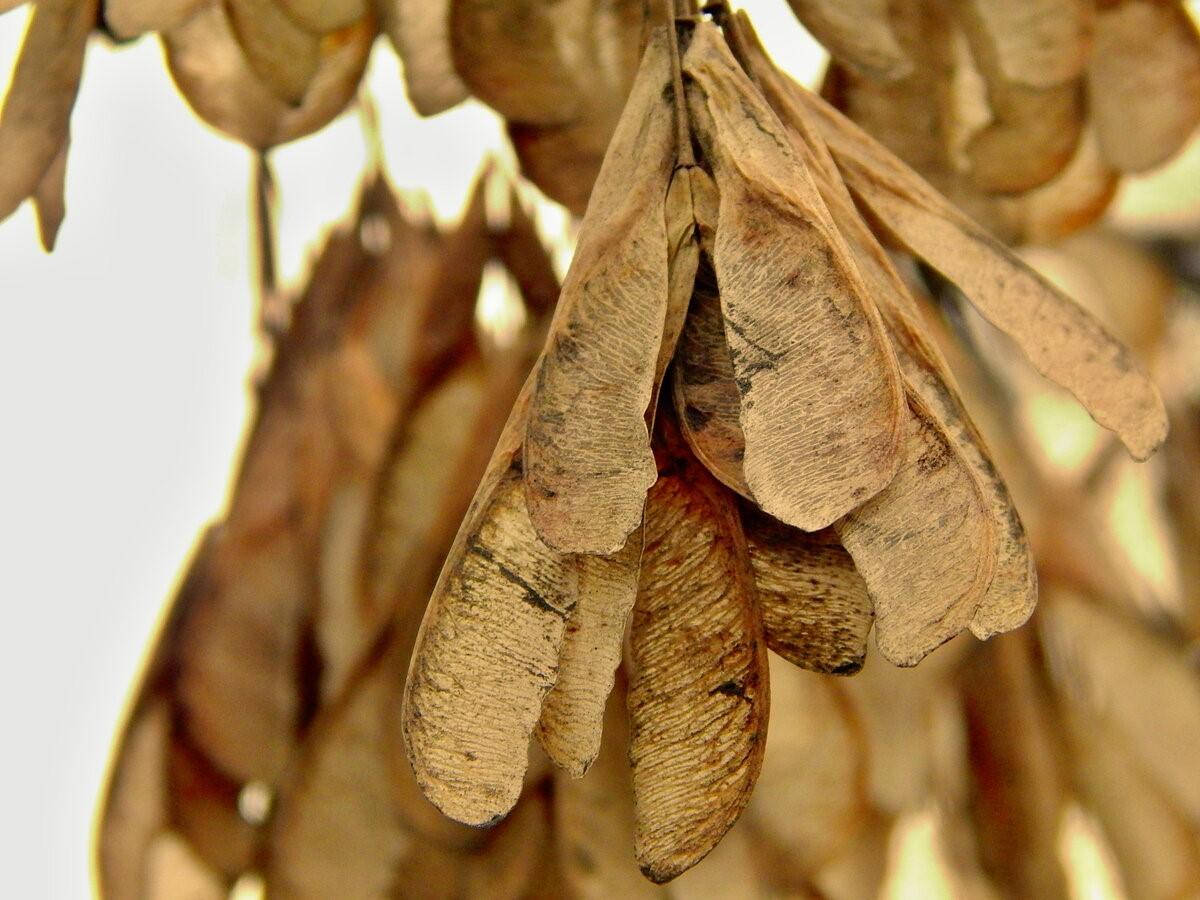
In winter, the seeds will undergo stratification and sprout with the thaw.
You can grow red maple artificially. To do this, buy a ziplock bag and fill it with a small amount of wet sand, moss and vermiculite. Up to 30 red maple seeds are placed in this medium.
The bags are stored in the freezer, maintaining a temperature no higher than +4 °C. Most of the seeds will hatch in 90-120 days. This result is considered successful. The sprouted material is planted in a pot or in a permanent place.
Red maple is also propagated by cuttings. The disadvantage of this method is the low percentage of rooting. The optimal time for planting is September. The material is cut into pieces of 20-25 cm, the lower cut is made at an angle.
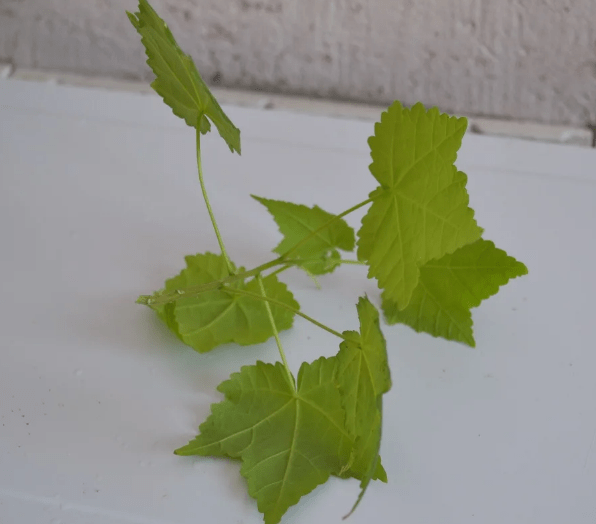
Cuttings are immersed in a solution of a root formation stimulator
After some time, the red maple is planted in a nutrient substrate. In spring, the seedling is transferred to a permanent place.
Red maple in landscape design
The tree looks great on the lawn as a single planting. This allows you to give the garden the necessary accent. Low-growing varieties are ideal for compact areas and narrow passages. They do not create shading for other garden inhabitants and do not interfere with free movement.
In areas with active groundwater, planting red maple will be the best solution, since few plants can withstand an abundance of moisture.
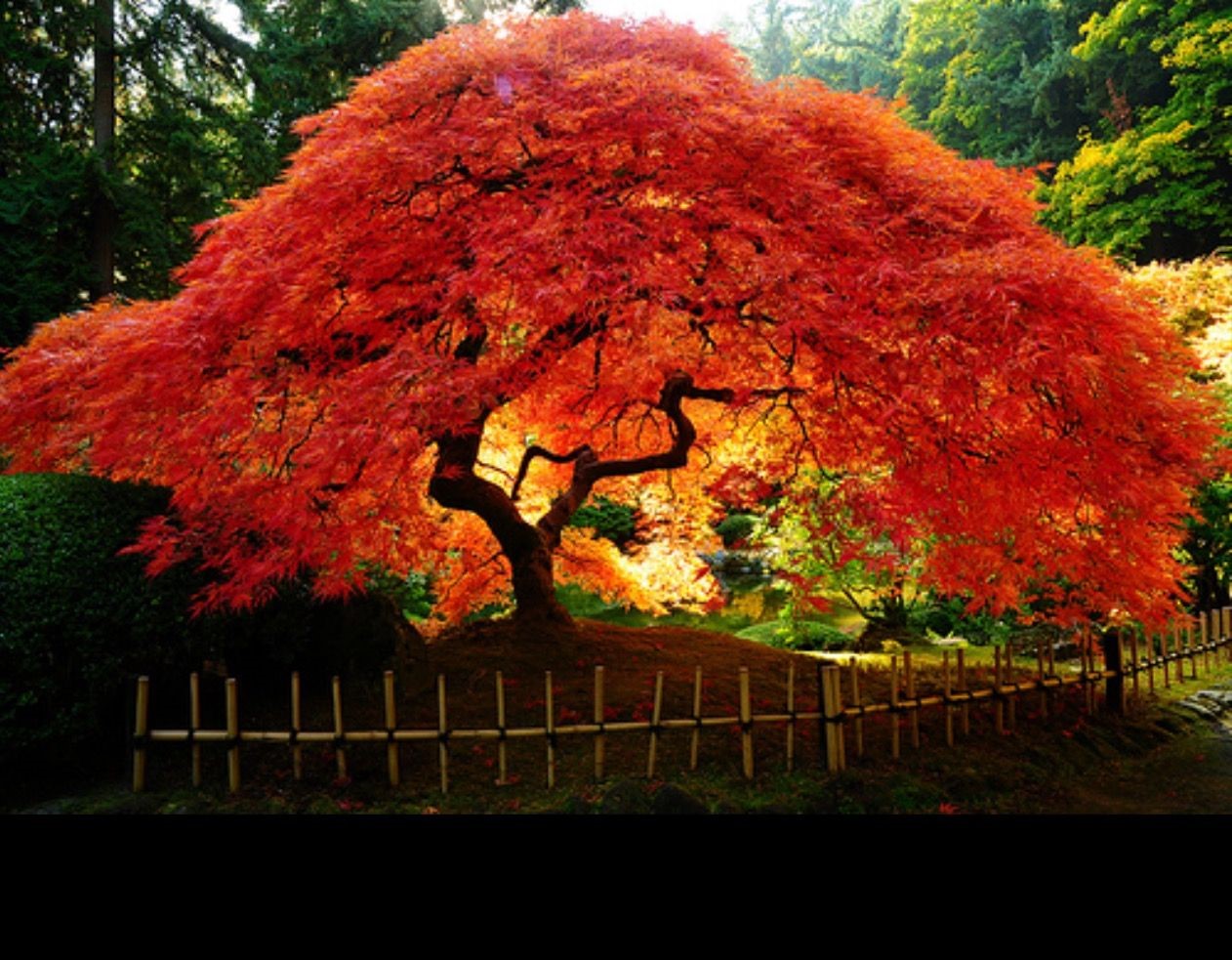
Medium-sized conifers can become neighbors; they are planted in the background
Red maple does not respond well to saline soils. In winter, it is better to sprinkle the paths with sand, which does not harm the crops. Another factor that is important to consider is the compaction of the substrate.
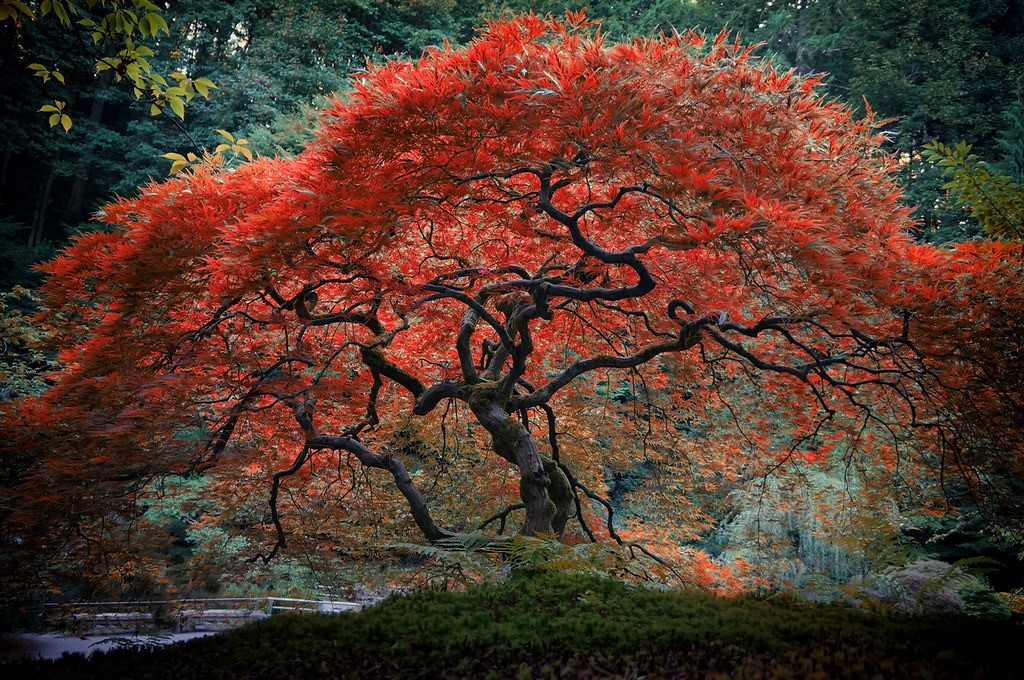
The tree does not like it when the roots are squeezed, so the planting site is periodically dug up
Conclusion
Red maple is an excellent design solution for a Russian garden. The tree brings the atmosphere of the East, does not take up much space and does not require constant care. Bright red leaves look great against the background of conifers. Most varieties tolerate frost easily, which makes this crop worthy of attention.
Reviews
